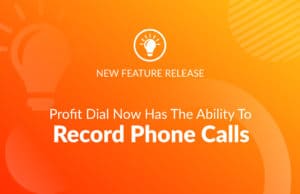A Comprehensive Guide to SMS Compliance

Let's get real for a moment. In today's fast-paced digital world, SMS marketing isn't just a 'nice-to-have'; it's the secret sauce businesses use to truly connect with their tribe. But here's the twist: texting has its own rulebook. And trust me, the fines for breaking those rules? They're not pocket change. That's why mastering SMS compliance isn’t just important—it’s a game-changer.
Here's the deal: SMS marketing rules aren't there to slow you down. They're there to ensure customers don't get slammed with spam, and businesses like yours keep it legit. Cross that line, and it's not just a slap on the wrist you’re facing but a potential sledgehammer to your bank account.
So, what's the game plan?
I’ve got your back. This guide? It's your playbook to navigate the SMS compliance maze. We’re talking about the who's who of rule-makers, the do’s and don'ts, and the how-to’s of getting a golden "YES" from your customers. Dive in, absorb, and let's run a clean, powerhouse SMS campaign.
Who Makes the Rules?
SMS marketing is like the Wild West, and like any frontier town, you need a sheriff and some rules to ensure that chaos doesn't reign. To help you understand who's laying down the law (and guidelines) in the world of SMS marketing, let's break it down.
Federal Organizations: The Big Guns
- Federal Communications Commission (FCC): This powerhouse oversees all interstate and international communications in the U.S., including radio, television, wire, satellite, and, you guessed it, SMS. The FCC is responsible for ensuring that consumers are protected from unwanted calls and messages. They're the brains behind rules like opt-out requirements for SMS campaigns.
- Federal Trade Commission (FTC): When protecting consumers from deceptive and unfair business practices, the FTC steps in. Their mission extends to SMS marketing, ensuring that messages are transparent and not misleading.
Key Laws: Setting the Boundaries
- TCPA (Telephone Consumer Protection Act): This is the granddaddy of SMS compliance laws. Established in 1991, the TCPA governs how businesses can contact consumers. It's got clear stipulations about obtaining consent before you send out marketing messages and hefty fines for those who don't play by the rules.
- TRACED Act (Pallone-Thune Telephone Robocall Abuse Criminal Enforcement and Deterrence Act): The next evolution in SMS laws, the TRACED Act, is making waves. Its primary aim? To crack down on unsolicited robocalls and messages. With the TRACED Act in play, businesses must implement call-authentication technologies (aka A2P Registration), ensuring that your customers aren’t bombarded with spam.
- CAN-SPAM (Controlling the Assault of Non-Solicited Pornography And Marketing Act):The CAN-SPAM Act, primarily known for regulating commercial emails, indirectly impacts SMS marketing practices. The Act emphasizes transparency and recipient rights in marketing communications. For SMS, promotional messages should clearly indicate their nature, and recipients should have an easy way to opt out, like the "Reply STOP to unsubscribe" mechanism. Essentially, the Act's core tenets—transparency, honest representation, and respect for recipient preferences—are also best practices in the world of SMS marketing.
As always, it's essential to consult with legal counsel or a compliance expert when crafting and executing SMS marketing campaigns to ensure adherence to all relevant laws and regulations.
Industry Organizations: Guiding the Path
- CTIA (Cellular Telecommunications Industry Association): Think of the CTIA as the wise old sage of the mobile world. While they don’t make laws, they create best practice guidelines that carriers love to enforce. From content standards to message frequency, CTIA guidelines ensure that the SMS ecosystem remains consumer-friendly and spam-free.
- Mobile Marketing Association (MMA): As champions of mobile marketing innovation, the MMA provides brands, agencies, and tech enablers with guidelines to ensure top-notch, ethical mobile advertising and messaging. They’re like the coaches, training businesses to score big without fouling.
In a nutshell, while the FCC and FTC are laying down the official laws, groups like CTIA and MMA are in the mix, creating best practices and guidelines that carriers tend to enforce. It’s a blend of legal mandates and best practices, aiming to make SMS marketing a win-win for businesses and consumers.
Let's cut through the noise: in the texting game, the TCPA is the big player you need to watch. At its heart, the TCPA screams one thing: get clear, written permission before hitting 'send' on those promo texts. Slip up? Well, you're staring down the barrel of hefty lawsuits and could be shelling out up to $500 to $1500 for each message. But here's the silver lining: getting consent is simpler than you'd think.
Express Written Consent
Okay, let's simplify: The TCPA says that before sending promotional texts, you need something called 'Express Written Consent.' This means a person gives you written permission to text them.
You might wonder about the term 'autodialer' and think, "I don't use that!" Especially with tools like REI BlackBook. But remember, the rules around the TCPA are old and weren't made for today's tech. So, to be on the safe side, assume you need written permission before sending texts. It's better to be safe!
Obtaining Express Written Consent
Obtaining express written consent isn't that hard. Remember, the TCPA definition allows for permission to be given electronically. This could be recorded verbal consent, checking a box on a web form, or simply texting a keyword to a phone number (provided the keyword call to action has some specific verbiage on the marketing material.) This opens up several options for capturing consent in a compliant way.
Collecting opt-ins via text-to-join and web forms are the two most popular ways to obtain express written consent. We’ll cover those opt-in methods in more detail below.
Different Types of Messages and Their SMS Compliance Requirements
SMS marketing messages are generally categorized into three types: conversational, informational (or transactional), and promotional.
Conversational Messages
Conversational messages are real-time, back-and-forth text exchanges between a business and a consumer. If the consumer initiates the conversation, it is considered that they have given implied consent to receive these messages.
Since the consumer is initiating the conversation, it’s implied that they expect a dialog, and no real permission is required.
Informational or Transactional Messages
Informational or transactional messages are non-promotional messages meant to provide important information to the consumer. Examples include appointment reminders, shipping notifications, and account updates. These messages require express consent but not necessarily express written consent.
It can be unclear what is considered informational or promotional messages, and it can be hard to distinguish between ‘express consent’ and ‘express written consent’. Therefore, we recommend obtaining express written consent even in cases where you’ll be sending informational or transactional messages.
Promotional Messages
Promotional messages are intended to advertise or sell a product or service. These messages require express written consent from the consumer.
This is the highest level of consent that you can capture from the consumer and puts you in the best position for defense if a lawsuit ever arises. You need to show clear evidence that the customer gave written permission to opt in.
How to Collect Opt-Ins
Once you understand the types of messages and their respective compliance requirements, you need to develop strategies to collect opt-ins from your customers. As mentioned above, it’s best to assume all of your text messaging to be promotional and that you need express written consent.
Let’s look at the two most common ways SMS marketers collect opt-ins and the best practices for doing so in a compliant way.
Text to Join:
Let's dive deep into what it is and how to ensure you play by the rules.
At its core, 'Text to Join' is a powerful tool businesses use to grow their SMS subscriber list. Have you ever heard someone say, "Text 'DEALS' to 314-555-1212 to get exclusive property"? That's 'Text to Join' in action. By texting a specific keyword to a short code or phone number, customers effectively say, "Hey, I want in on this!"
But as with all great powers, there are great responsibilities. The TCPA and CTIA have put forth guidelines to ensure that businesses don't misuse this tool and that customers aren't left feeling deceived. SMS Compliance is a must!
TCPA Compliance: Clear, Transparent, Ethical
When prompting customers to 'Text to Join', ensure your marketing:
- Disclose Future Promotions: Make it clear that by opting in, they’ll receive promotional messages in the future.
- Reveal Automated Use: Inform your audience that messages will come from automated tools. This keeps transparency at the forefront.
- No Purchase Required: Emphasize that their agreement to receive these messages isn't tied to any purchase or transaction. Let them know it's their choice.
- Share Terms & Conditions: A link to your program’s terms & conditions and privacy policy isn't just a good-to-have—it's essential. More on this soon.
CTIA Compliance: Keep it Honest and User-Friendly
Following CTIA guidelines, make sure you:
- State Your Purpose: Clearly inform subscribers about the intent behind your campaign—be it promotions, updates, news, etc.
- Set Frequency Expectations: Whether it’s daily, weekly, or monthly, let them know how often they should expect your messages.
- Highlight Message & Data Rates: Transparency is key. Inform them about potential messaging and data rates.
- Provide Opt-Out Instructions: Empower subscribers with the knowledge to opt-out if they change their minds.
- Link to Terms & Privacy: Beyond just the T&Cs, share a link to your privacy policy, ensuring subscribers are informed of their data rights.
Immediate Confirmation: A Must-Have
Once someone has opted in, the interaction shouldn't end there. An immediate auto-response serves as a digital handshake, solidifying their choice. Ensure this message includes:
- Your business name (brand recognition is essential!).
- A reminder about message & data rates.
- Quick opt-out instructions (keep it simple).
- A link to your terms & privacy policy.
In essence, 'Text to Join' is an efficient, direct, and engaging way to connect with your audience. But, like all communication tools, it requires respect and responsibility. Keep it compliant, transparent, and value-driven, and you're on the path to SMS marketing success!
Web Forms: Harnessing the Power of Digital Opt-Ins
In today's digital era, the web form can be your best ally in scaling your SMS marketing list. When utilized effectively, web forms capture valuable customer data and lay the foundation for trust, ensuring subscribers know precisely what they're signing up for. But, as always, the twin pillars of TCPA and CTIA guide the way.
The Anatomy of an Effective Web Form
- Input Fields: At its core, your web form will feature a field for potential subscribers to enter their phone numbers. To personalize your communication further, many businesses also incorporate fields to capture a subscriber's first and last name.
- Transparency is King: Before someone hits that 'submit' button, they must be fully aware of what lies ahead. Be crystal clear that they're giving the green light for automated promotional messages.
- Consent Matters: Emphasize that while they are agreeing to receive communications, it's not tied to any purchase. This distinction ensures a transparent, no-pressure experience.
- The Magic Checkbox: Consider including a checkbox to make your opt-in rock solid. However, keep this unchecked by default, letting users actively choose to check it. This simple action serves as a robust digital signature, confirming their intent.
Guiding Web Forms with CTIA Principles
- Set the Stage: Just as with 'Text to Join,' set clear expectations about message frequency. Let them know whether it's daily deals, weekly news, or monthly updates.
- No Hidden Costs: Always inform your subscribers about potential messages and data rates.
- Opt-Out Strategy: It's crucial to ensure subscribers know they have the power to opt-out at any point. This empowers them and enhances trust.
- Need Help?: It's always a good practice to provide help instructions so users can troubleshoot or get answers to any queries.
- Guiding Links: Seamlessly integrate links to your terms and privacy policies, ensuring your audience knows their rights and your obligations.
The Confirmation Text – The Final Seal
As with 'Text to Join,' once a user submits their details, send them an immediate automated confirmation message. This acts as a digital handshake, welcoming them aboard. This message should reiterate:
- Your business name for clarity.
- A gentle reminder about message & data rates.
- Simple opt-out instructions.
- A direct link to your terms and privacy policy.
By leveraging web forms, businesses can integrate SMS opt-ins seamlessly into their online presence, creating a unified, efficient, and compliant subscriber experience. When executed correctly, you're not just growing your list but cultivating a community that trusts your brand and values your content.
Required SMS Compliance Verbiage
Now that you’ve read through the guidelines for collecting opt-ins, you’ve probably noticed some common verbiage used throughout. Each is key to ensuring compliance with the TCPA, CTIA and obtaining proper express written consent.
Each of the following components is required wherever you’re collecting opt-ins. Let’s look at each and how they all come together.
Your Identity
You must make it clear who is sending the messages. This includes your business name and the purpose of your messages.
Consent to Receive Automated Messages
You need to explicitly state that by opting in, the customer agrees to receive promotional messages from you, which will be sent via an automated method.
No Purchase Necessary
In addition to the agreement of receiving automated promotional messages, you must also disclose that their agreement to opt-in is not a condition of purchase. This means that a consumer doesn’t have to purchase to be eligible to subscribe.
Message Frequency
Let customers know how often they can expect to receive messages from you.
Message and Data Rates
You need to inform customers that their carrier may charge them for receiving your messages.
Opt-Out Instructions
You must provide clear instructions on how customers can opt out of receiving your messages anytime.
Link to Terms and Conditions
You should provide a link to your terms and conditions, which should include all of the above information and any other information relevant to your SMS marketing campaign.
What Happens If You Violate SMS Compliance Guidelines?
Violations of SMS compliance guidelines can lead to severe penalties, including hefty fines and legal action. Here's what can happen if you violate these guidelines:
TCPA Violations
Violations of the TCPA can result in fines ranging from $500 to $1,500 per unsolicited message. In severe cases, these fines can amount to millions of dollars.
CTIA Violations
While CTIA guidelines are not laws, violations can still have serious consequences. If you fail to comply with these guidelines, your SMS marketing campaign could be blocked by mobile carriers.
SMS Audits
If your SMS marketing campaign violates TCPA or CTIA guidelines, it could be subject to an audit. This process involves a review of your campaign to identify and correct any compliance issues. If you fail to correct these issues, your SMS privileges could be suspended or terminated.
SMS Compliance Conclusion
Complying with SMS marketing laws and guidelines is not just a legal obligation – it's also crucial for building trust with your customers and ensuring the success of your campaign. By understanding and following these guidelines, you can create an SMS marketing campaign that is both effective and compliant.
At REI BlackBook, we're committed to helping our customers navigate the complexities of SMS compliance. With our all-in-one sales and marketing platform that includes text messaging, we provide the tools and resources you need to run a successful, compliant SMS marketing campaign.
Unlock the System Top Investors Swear By—Take Back Your Life with a 14-Day Free Trial
Automate Your Business. Close More Deals. Enjoy More Freedom.
- Automate Everything – Put your business on autopilot, from lead follow-up to closing.
- Close More Deals – Use AI tools to quickly spot and lock in the best opportunities.
- Reduce Stress – Streamline your workflow so nothing falls through the cracks.
No long-term commitments. Cancel Anytime















